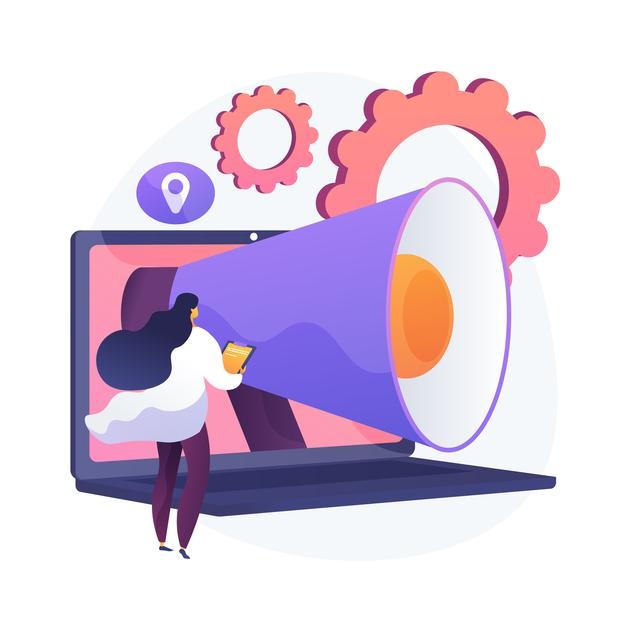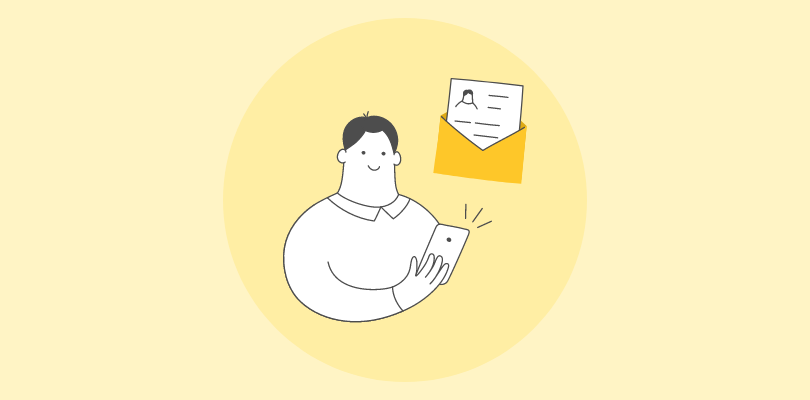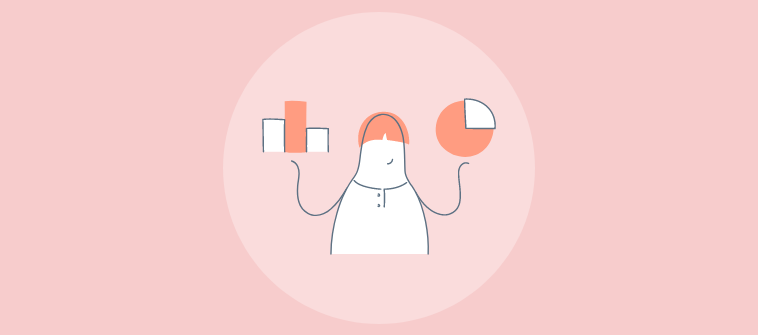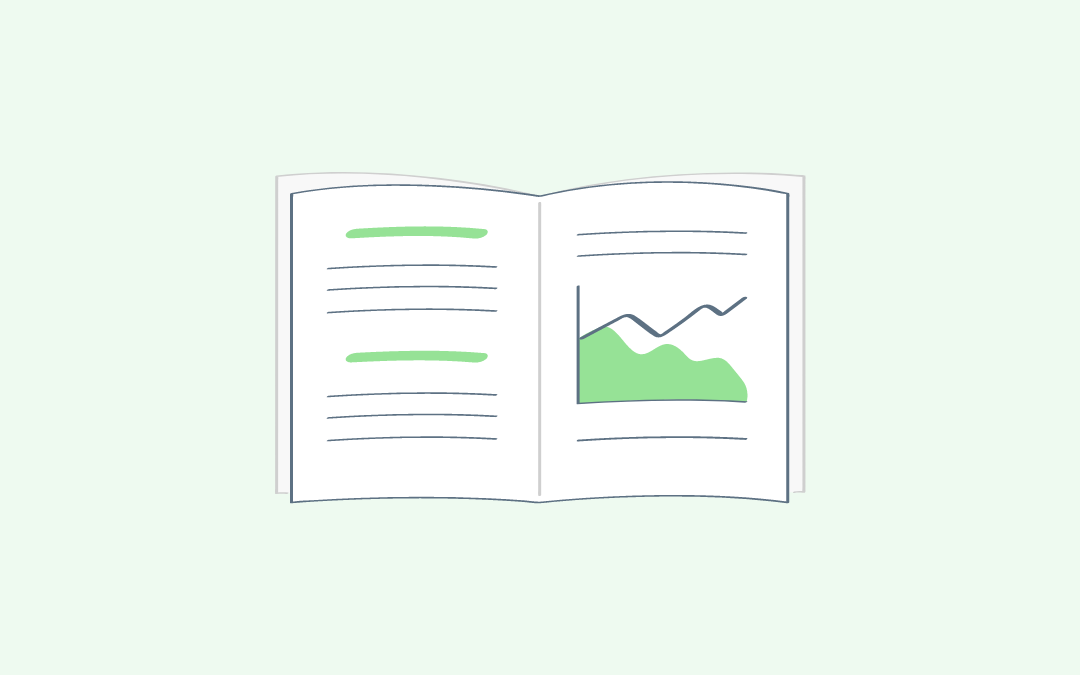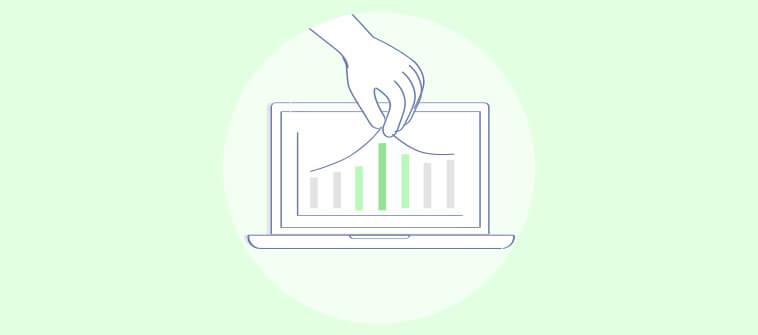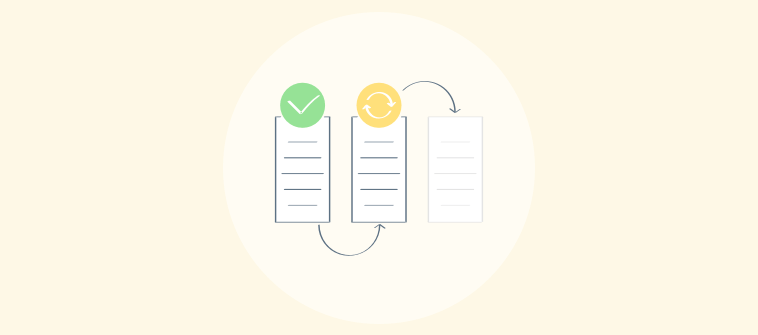“It costs 7 times more to attract a new customer than it does to retain an existing one.” – Neil Patel
Customer satisfaction is essential for the success of any business. While acquiring new customers is important to meeting sales goals, retaining existing ones is just as crucial for growth. Building long-term relationships should be a top priority.
But what if, despite your best efforts, customers aren’t staying? If this sounds familiar, you may need an effective customer retention strategy.
A reduced churn rate can lower your customer acquisition costs, boost team productivity, and increase revenue through up-selling. Personalized interactions play a key role in improving customer satisfaction, and using CRM for customer retention can make this process easier. A CRM helps by organizing customer data and feedback, allowing you to optimize your interactions and better understand customer behavior.
With the right CRM system, you can keep your customers engaged, satisfied, and loyal.
In case you are new to the concept of CRM and its benefits, watch this quick video –
In this blog, we’ll explore the best practices for retaining customers and how a CRM can support these efforts.
What Is Customer Retention?
In the business world, it is easy to get caught up in the excitement of landing new customers. But let’s not forget about the customers who’ve been with us from the start. These loyal customers are like the steady foundation of our business, and it’s important to nurture and maintain those relationships.
So, what exactly is customer retention?
Customer retention refers to a business’s ability to retain its customers over time. It’s all about building long-term relationships with customers and ensuring they keep coming back to use your products or services.
Retaining customers is crucial because it’s often more cost-effective than acquiring new ones. Plus, loyal customers tend to spend more, recommend your brand, and provide valuable feedback.
To improve customer retention, you need to meet or exceed customer expectations consistently. This is where CRM for customer retention comes in. A CRM helps you track customer interactions, preferences, and behavior.
With this data, you can offer personalized experiences, resolve issues promptly, and keep customers engaged with your brand. You can also automate follow-ups and create loyalty programs, making it easier to keep customers happy.
Remember, it’s not just about making a sale; it’s about creating an experience that keeps your customers coming back for more.
Read more: 7 Ways CRM Software Can Help Increase Customer Retention for Your Business
Why Is Customer Retention Important for Businesses?
Customer retention is one of the most powerful strategies a business can focus on for sustainable growth and success. It’s not just about keeping your customers satisfied but about building long-term relationships that benefit both parties. Let’s explore why customer retention is so crucial for your business.
1. Cost-Effective
One of the main reasons customer retention is important is that it’s far more cost-effective than acquiring new customers. Research shows that acquiring new customers can cost up to five times more than retaining existing ones. Think of all the marketing, advertising, and sales efforts involved in attracting a new customer!
Instead, you can invest those resources in delivering better experiences, rewards, and services to the customers you already have. Loyal customers tend to spend more over time. They’re familiar with your brand, trust your products, and are more likely to make repeat purchases.
Plus, happy customers become brand advocates, spreading positive word-of-mouth and bringing in new business without you having to lift a finger.
2. Boosts Profitability
To understand the importance of customer retention, let’s begin by talking about numbers.
Even a 5% increase in customer retention can boost profits by up to 95%.
A retained customer is far more likely to make repeat purchases, which directly impacts your bottom line. Loyal customers tend to spend more because they trust your brand and are familiar with your products or services.
They are also more likely to explore new offerings from your business, boosting sales without any additional marketing efforts. This is why focusing on retention can significantly enhance profitability.
When you have a solid customer retention strategy in place, you’re maximizing the lifetime value of each customer. The longer they stay with you, the more revenue they generate over time, making customer retention one of the most efficient ways to drive profitability.
3. Improves Brand Loyalty
Customer retention directly contributes to brand loyalty, which can be quite helpful in competitive markets. When customers consistently receive value from your products or services, they are more likely to remain loyal.
This loyalty translates into ongoing support for your brand, even when competitors try to lure them away. Moreover, loyal customers are more forgiving when mistakes happen. They are likely to give your business another chance, knowing that their past experiences with you were positive.
Brand loyalty also fosters a sense of community, where your customers feel connected to your brand on an emotional level. Over time, this connection turns into a competitive advantage, as loyal customers are less inclined to switch to competitors, even if they offer lower prices or similar products.
4. Enhances the Customer Experience
Prioritizing customer retention encourages you to focus on providing exceptional service and support at every touchpoint. This means being attentive to their needs, addressing their concerns promptly, and exceeding their expectations.
Positive customer experiences lead to increased brand reputation and customer lifetime value. Happy customers are more likely to recommend your brand to their friends and family, driving new business through word-of-mouth.
Additionally, when customers have a positive experience, they are more likely to continue purchasing from your company over the long term, contributing to a higher customer lifetime value.
Speaking of improving customer experiences, here’s how BIGContacts helped Ewald Kubota boost sales using BIGContacts –
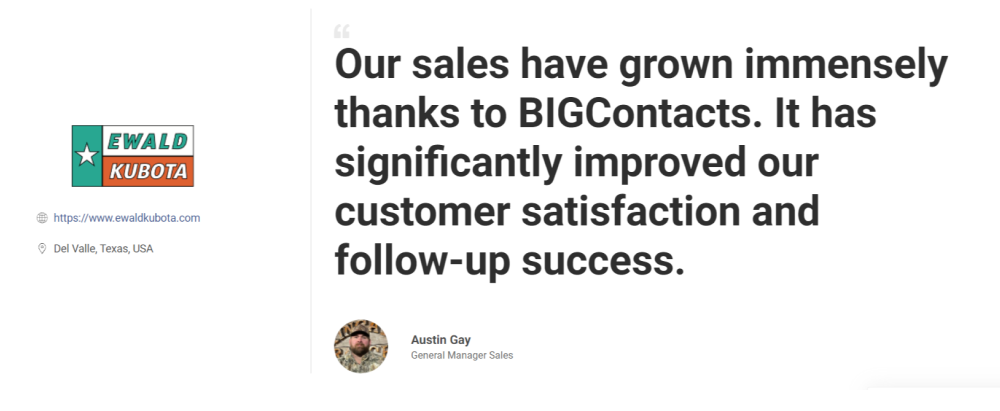
5. Increases Lifetime Value
The longer a customer stays with your business, the higher their lifetime value. Lifetime value refers to the total revenue a customer brings in throughout their relationship with your brand. Retained customers not only make repeat purchases but also tend to spend more over time. They are more likely to upgrade to higher-tier products or services and take advantage of additional offerings. By focusing on retention, you’re maximizing the value each customer brings to your business.
This can also open up opportunities to cross-sell or upsell, increasing overall revenue without spending more on acquiring new customers. The longer the relationship, the more valuable the customer becomes, making retention a key driver for sustainable business growth.
6. Leverages Advanced Technologies
Customer Relationship Management (CRM) tools are essential for businesses aiming to improve customer retention. A CRM for customer retention helps you organize customer data, interactions, and preferences, allowing you to deliver personalized experiences.
With a CRM, you can track every touchpoint with your customers, ensuring that no interaction is missed. This lets you respond proactively to their needs, provide tailored recommendations, and even offer loyalty rewards.
Using a CRM can help you maintain strong relationships with customers by keeping all their information in one place and automating follow-ups. It’s easier to deliver consistent service, and your customers feel valued, which keeps them returning.
Watch:
7. Feedback and Improvement
Retained customers provide invaluable feedback that helps you improve your products and services. Long-term customers have a deeper understanding of your brand and can offer insights that new customers cannot.
By listening to their feedback, you can make necessary adjustments that improve your offerings and overall customer experience. This feedback loop helps you stay competitive and meet your customers’ evolving needs.
It also shows customers that you care about their opinions, further strengthening your relationship. When customers see their feedback implemented, they’re more likely to feel valued and continue doing business with you.
Read more: Customers and Testimonials | BIGContacts by ProProfs
Customer Acquisition vs. Customer Retention – How Are They Different?
Understanding the differences between customer acquisition and customer retention is key to building a strong business strategy.
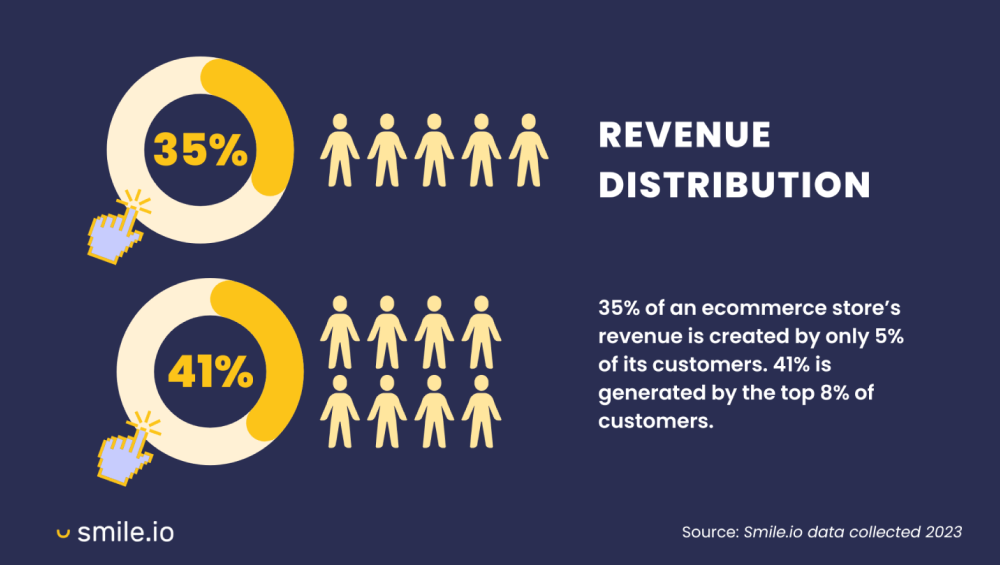
Let’s break it down into simple terms to help you see where each fits your business growth.
Aspect |
Customer Acquisition |
Customer Retention |
| Definition | The process of gaining new customers through marketing and sales efforts. | The process of keeping existing customers engaged and loyal over time. |
| Goal | Expanding the customer base and increasing market share. | Reducing churn and increasing the customer retention rate. |
| Strategies Used |
|
|
| Cost | Generally higher due to marketing and advertising expenses. | Lower cost since it focuses on relationship building and customer service. |
| Time Frame | Short-term impact, focused on immediate results and acquiring new customers quickly. | Long-term focus, emphasizing continuous engagement and customer loyalty. |
| Importance | Crucial for initial growth, especially for startups and new product launches. | Essential for long-term profitability and sustainable growth. |
| Example | Running a targeted Facebook ad campaign to attract new customers. | Creating a customer loyalty rewards program to encourage repeat business. |
What Affects Customer Churn Rate?
Customer churn rate is the percentage of customers who stop using your product or service over a specific time period. Understanding the factors that influence churn can help you improve your customer retention rate and ensure long-term business success. Here’s a deeper look at what can affect churn:
1. Poor Customer Experience
When customers feel ignored or encounter frequent issues with your product, it directly impacts their satisfaction. Poor communication, slow customer support, or unresolved problems can push them to switch to competitors.
Ensuring that your customers receive quick, helpful responses and consistent, quality service will create a positive experience that keeps them loyal. Listening to customer feedback and proactively addressing issues can drastically improve their satisfaction and reduce churn.
2. Lack of Engagement
A lack of engagement can lead to customers feeling disconnected from your brand. If they don’t see regular value in your product or service, they may not feel invested enough to stay. Engaging with your customers through personalized communication, updates, or exclusive offers can help maintain a relationship.
The more your customers interact with your brand, the less likely they are to leave. Use tools like CRM systems to track customer interactions and engagement to prevent disengagement before it happens.
3. Product Misalignment
When your product or service no longer meets the needs of your customers, they are more likely to churn. This can happen if your offering doesn’t evolve with market trends or customer expectations.
It’s important to regularly gather customer feedback to understand their changing needs and preferences. Continuously improving your product to meet those needs ensures that your customers see long-term value in what you offer, reducing the likelihood of them leaving for a competitor.
4. Pricing Issues
Customers are sensitive to pricing, and if they feel your product is overpriced or no longer offers good value for money, they may churn. It’s important to ensure your pricing structure is competitive and aligned with the value you provide.
Offering flexible pricing plans, discounts, or special deals for long-term customers can help you retain those who might be tempted to switch for a better deal. Transparency in pricing can also build trust and increase customer loyalty.
5. Strong Competition
In a competitive market, customers have numerous options. If competitors offer better features, pricing, or customer service, customers may switch. To avoid this, continuously innovate and provide unique benefits that your competitors don’t.
Keeping up with market trends, adding new features, and enhancing the user experience can make your product stand out. Staying competitive ensures your customers don’t feel the need to explore other options.
6. Ineffective Onboarding
The first few interactions customers have with your product set the tone for their entire experience. If the onboarding process is confusing or complicated, customers may become frustrated and leave before fully understanding the value of your product.
Simplifying the onboarding experience and providing clear instructions can help customers get the most out of your product from the start. A smooth and easy onboarding process improves customer satisfaction and reduces the likelihood of churn.
7. Lack of Loyalty Programs
Customers appreciate being rewarded for their loyalty. Without incentives to stay, they might feel there’s no reason to continue with your brand. Implementing loyalty programs that offer discounts, rewards, or exclusive perks can encourage customers to stay longer.
These programs not only help improve CRM customer retention but also make customers feel valued, which fosters long-term loyalty. Building emotional connections with your customers through these programs can significantly reduce churn.
10 Simple Ways to Boost Customer Retention
Customer retention is critical for the growth and sustainability of any business. By leveraging customer retention strategies and using tools like CRM, you can build lasting relationships with your clients. Here are some proven ways to boost customer retention that you can apply immediately.
1. Personalize Customer Experiences
Personalization is one of the most effective ways to make customers feel special. By using customer retention in a CRM system, you can gather data about customer preferences, purchase history, and behavior. This data lets you offer tailored recommendations, personalized emails, or even birthday discounts.
For example, sending customers a discount on a product they’ve viewed online can create a sense of connection. When customers feel understood and catered to individually, they are more likely to stay loyal to your brand.
2. Create a Seamless Onboarding Process
First impressions matter, especially when a customer is new to your product or service. A smooth and simple onboarding process ensures that customers feel comfortable and confident from the start.
Provide clear instructions, tutorials, or even dedicated support to help them get started. By ensuring they understand how to use your offerings effectively, you reduce frustration and boost long-term satisfaction, increasing the chances of customer retention.
3. Easy Checkout Process
A smooth and efficient checkout process is crucial for retaining customers. Complicated or lengthy checkout procedures can frustrate customers, leading to cart abandonment. Simplify the process by offering multiple payment options, and discount coupons, allowing guest checkouts, and minimizing the number of steps required to complete a purchase.
An easy and quick checkout ensures a positive experience, increasing the chances that customers will return for future purchases. This small change can significantly improve customer retention and satisfaction.
4. Timely Order Updates
Providing timely updates can significantly boost customer retention. Providing real-time notifications about order status, including shipping and delivery, builds trust and transparency. Customers feel valued and in control, reducing anxiety over when their products will arrive.
This proactive communication reduces the chances of negative experiences, especially in cases of delays, and shows customers that their needs are a priority. It’s a simple but effective way to enhance customer loyalty.
5. Consistent Social Media Engagement
Staying active on social media helps you build strong connections with your customers. By sharing relevant, engaging content and responding to comments or messages, you create a two-way dialogue that fosters loyalty.
Regular engagement allows customers to feel heard and valued, strengthening their relationship with your brand. It also helps build a community where customers can interact with each other and your brand, increasing trust and retention. Consistent interaction keeps your business top of mind for future purchases.
6. Implement a Loyalty Program
Loyalty programs incentivize customers to keep coming back. A well-designed loyalty program rewards customers for every purchase or interaction, making them feel appreciated for their continued business.
For instance, you could implement a points-based system where customers accumulate points with every purchase, which they can redeem for discounts, freebies, or exclusive offers. By making your loyalty program fun and easy to use, you can motivate customers to stay engaged and loyal to your brand.
7. Collect and Act on Feedback
Your customers’ feedback is a goldmine of insights. Regularly gathering feedback, whether through surveys, reviews, or direct communication, helps you understand what your customers like and what can be improved. More importantly, act on this feedback.
If customers see that their suggestions lead to meaningful changes, they’ll feel valued and more inclined to stick around. For example, if multiple customers suggest improving your website’s usability, making those changes quickly can show that you care about their experience.
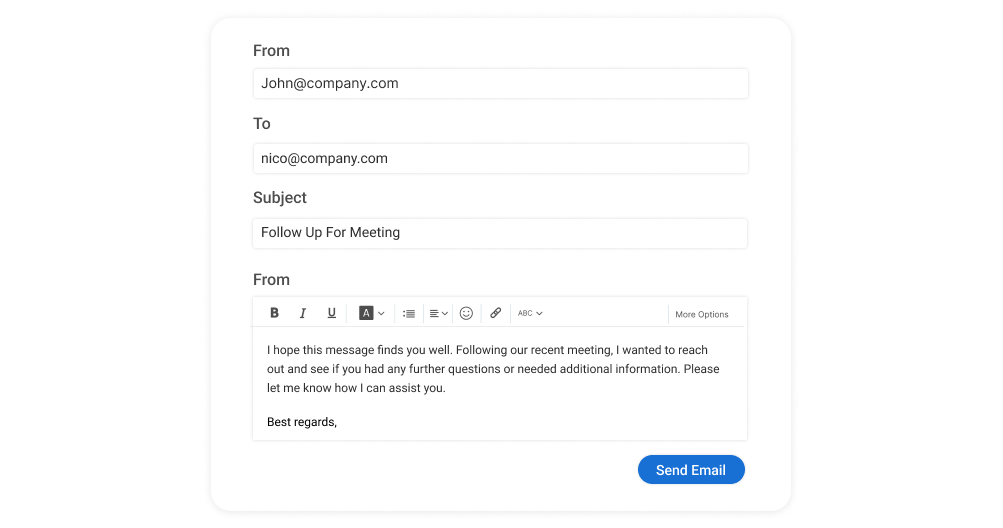
8. Focus on Customer Education
When customers know how to get the most out of your product or service, they are more likely to remain loyal. Providing educational content such as tutorials, how-to guides, or webinars can help your customers become more skilled and confident in using your offerings.
This, in turn, enhances their overall experience and reduces their chances of leaving for a competitor. If customers feel empowered and see the long-term value in your offer, they’ll stick around for the long haul.
9. Flexible Return and Exchange Policies
Offering a hassle-free return and exchange policy helps build trust with your customers. When customers know they can easily return or exchange products without difficulty, it reduces their purchase anxiety and encourages them to shop with confidence.
This approach shows that you stand behind your products, which can foster a sense of loyalty. By providing clear, customer-friendly policies, you not only improve satisfaction but also increase the likelihood of repeat purchases, enhancing overall customer retention.
10. Regularly Analyze Customer Retention Metrics
Understanding your customer retention metrics helps you identify areas of improvement and growth. Analyze metrics such as churn rate, repeat purchase rate, and customer lifetime value to get insights into customer behavior.
By regularly monitoring these metrics, you can make data-driven adjustments to your customer retention strategies, ensuring they are effective and relevant to your audience’s needs. This proactive approach keeps customers engaged and loyal.
How to Improve Customer Retention With CRM
CRM (Customer Relationship Management) systems play a pivotal role in helping businesses improve customer retention by providing tools that make interactions more personalized, efficient, and impactful. Let’s explore some customer retention strategies you can implement with a CRM and the customer retention benefits that come along with it.
1. Personalize Customer Communication
One of the biggest advantages of a CRM is that it helps you to personalize your communication with customers. By storing detailed customer information about their purchase history, preferences, and interactions, you can tailor your messages to make them more relevant.
For instance, sending personalized birthday messages or offering discounts on their preferred products creates a strong emotional connection. Customers feel appreciated when you recognize them as individuals rather than just numbers, and this deepens their loyalty to your brand.
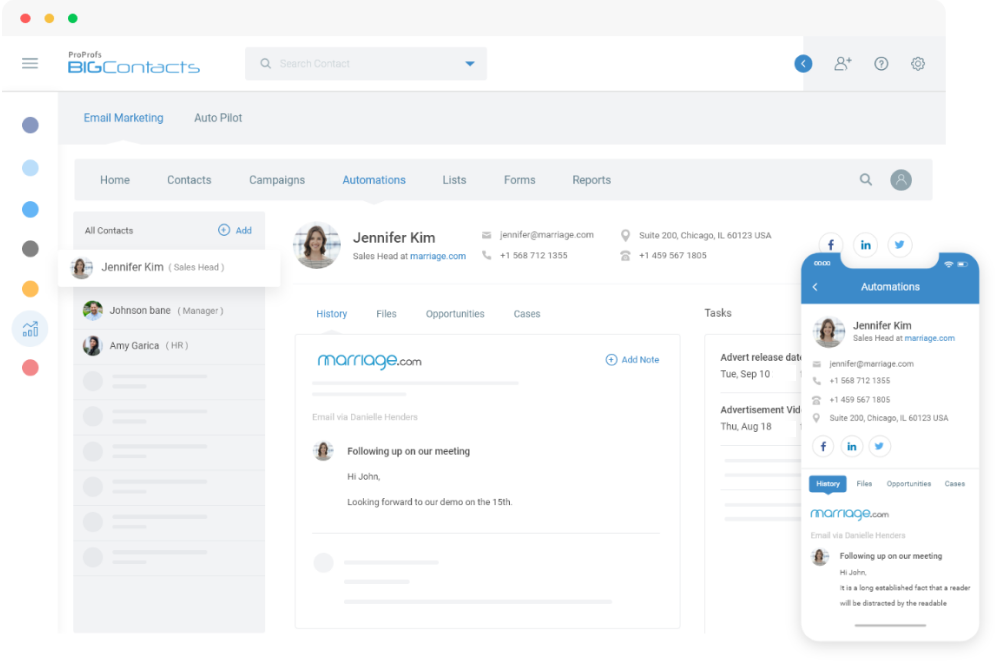
2. Track Customer Preferences
A CRM helps you gather and analyze customer behavior data. By tracking their preferences, such as the products they purchase frequently or the services they inquire about, you can make better-informed decisions.
You can then suggest products or services that align with their interests, creating a more personalized shopping experience. When customers feel understood, they are more likely to continue doing business with you. This proactive approach also helps you anticipate their future needs, which further enhances loyalty.
3. Automate Follow-ups
CRMs are excellent tools for automating follow-up communication. You can set reminders to send follow-up emails after a purchase or reach out to customers who haven’t interacted with your brand in a while.
This automation ensures that you stay on top of customer interactions without requiring manual effort for every single follow-up. Consistent communication, even after the sale, keeps your brand at the forefront of their minds, increasing the chances of repeat business and improving customer retention.
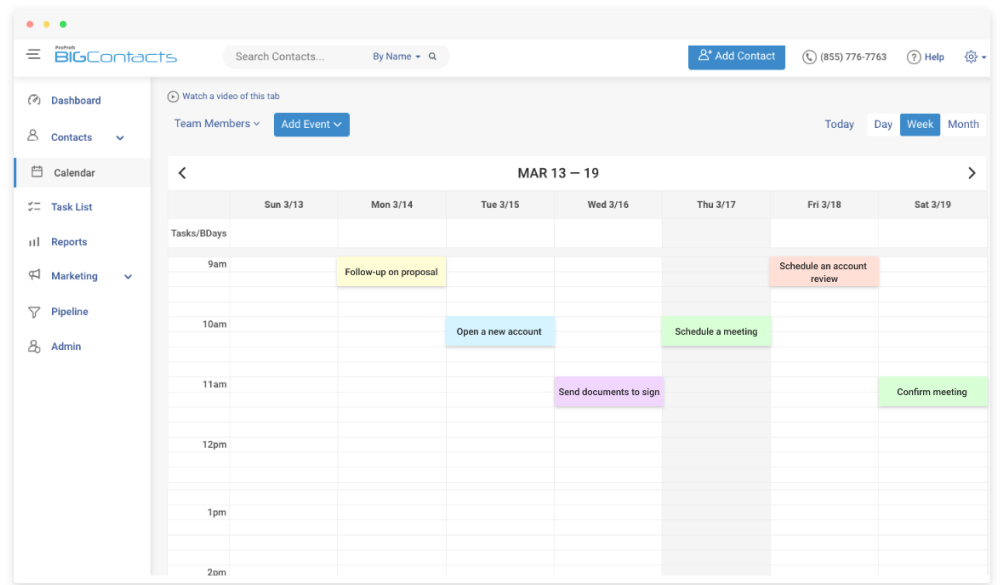
4. Offer Exclusive Rewards
Rewarding loyal customers is a proven way to boost retention, and a CRM can help you identify and target these customers. By using your CRM to track frequent buyers or long-term subscribers, you can offer them exclusive deals, early access to products, or special discounts.
This type of loyalty program keeps customers engaged and incentivizes them to continue choosing your brand over competitors. The customer retention benefits of such programs include increased lifetime value and more predictable revenue streams.
5. Segment Your Audience for Targeted Campaigns
A CRM allows you to segment your customer base into specific groups based on factors such as demographics, past purchases, or engagement levels. This segmentation lets you send more targeted and relevant marketing campaigns, ensuring that your messages resonate with each customer group.
For example, you can create special offers for repeat buyers or send personalized content to new customers. By delivering the right message to the right audience, you’re more likely to engage them and keep them loyal.
6. Improve Customer Support
A CRM allows your support team to track all interactions with customers in one place. This means that when a customer reaches out with an issue, your team has access to their entire history, allowing for faster and more effective resolutions.
Customers value companies that offer quick, competent support, and providing this consistently improves their satisfaction. When customers feel confident that their problems will be resolved promptly, they’re more likely to remain loyal to your brand.
7. Generate Reports
A CRM enables you to generate detailed reports on customer behavior, purchase trends, and engagement metrics. By regularly reviewing these reports, you can identify patterns and areas for improvement in your customer retention strategies.
Reports provide valuable insights into which strategies are working and which need adjustment. This data-driven approach ensures you’re making informed decisions, helping you retain customers more effectively and boosting overall satisfaction.
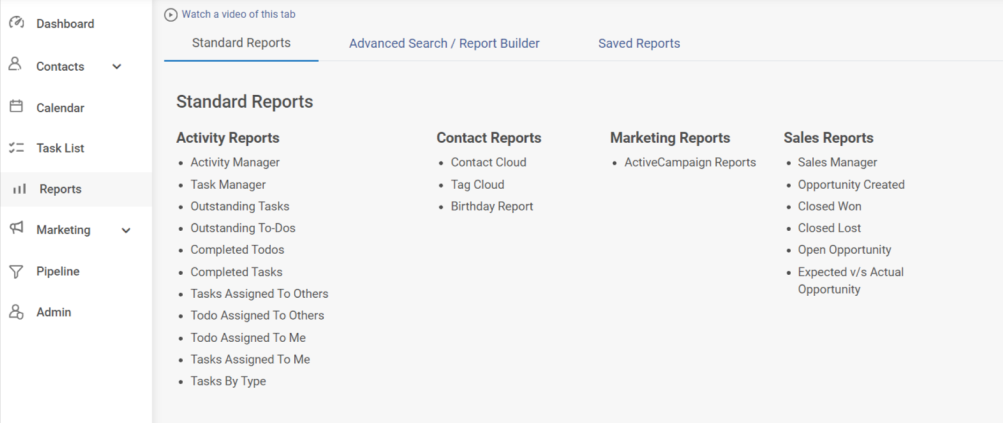
8. Improve Internal Communication
CRMs improve internal communication by centralizing customer data, making it accessible to different teams across your business. Sales, marketing, and support teams can all access the same information, ensuring everyone is on the same page.
This seamless communication allows teams to collaborate better and provide a more consistent experience for customers. When your internal processes run smoothly, it directly impacts the customer experience, increasing retention rates.
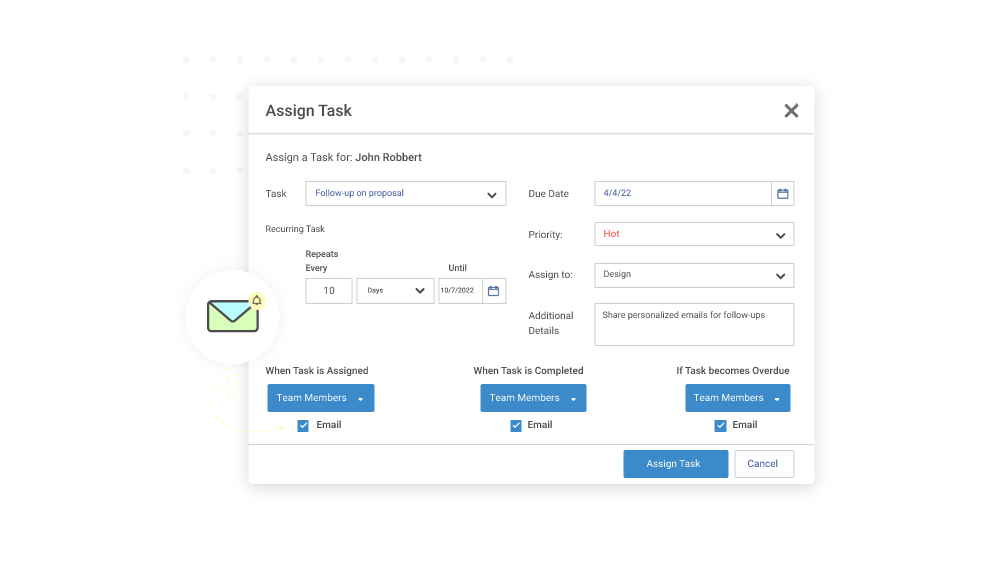
9. Create Automated Surveys for Continuous Improvement
Gathering feedback at key points in the customer journey is important for making continuous improvements. CRMs allow you to automate surveys that are sent after purchases, customer support interactions, or other milestones.
These surveys give you real-time insights into customer satisfaction and areas for improvement. By acting on this feedback quickly, you show customers that you value their input, which can increase their loyalty and reduce the likelihood of them switching to a competitor.
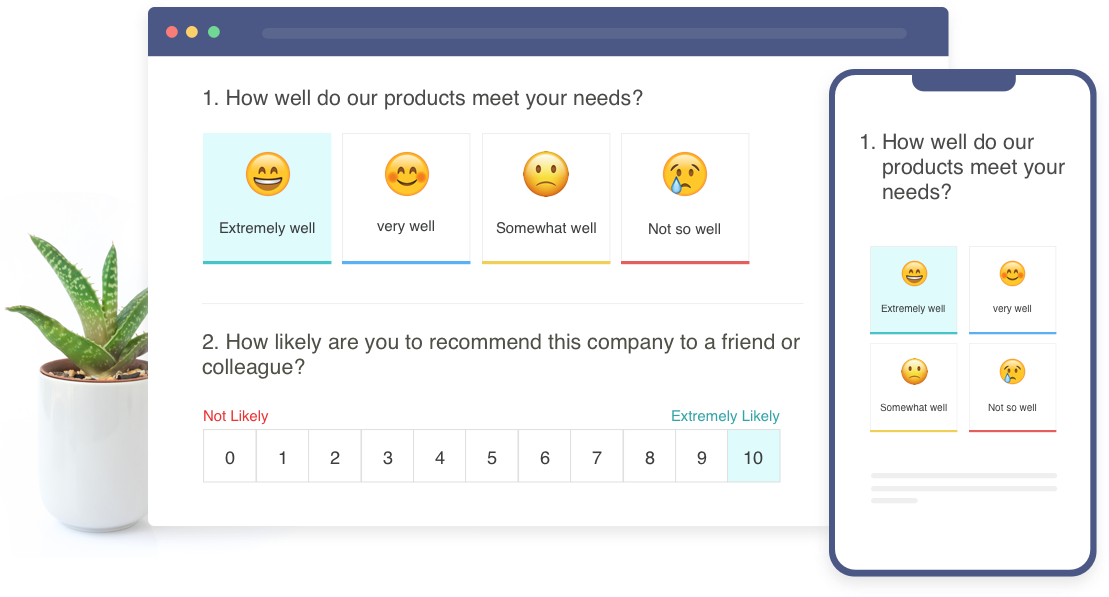
10. Provide Consistent Experiences Across Channels
Customers interact with brands across various channels, from email to social media to customer support. A CRM helps you maintain a consistent voice and messaging style across all of these platforms, ensuring that your customers always receive the same quality of service.
Consistency builds trust, as customers know they can rely on you for a smooth, seamless experience no matter how they engage with your brand. This trust is key to retaining loyal customers.
Customer Retention – the Key to Profitability
Focusing solely on acquiring new customers isn’t enough for sustainable business growth. To truly succeed, you also need to retain the clients you’ve already gained.
Client retention is essential for long-term growth, and managing customer data efficiently plays a huge role in achieving this. A strong CRM customer retention strategy ensures you stay on top of every customer interaction while keeping all information in one place.
BIGContacts is an excellent CRM solution that helps you meet your customers’ expectations by organizing data and optimizing customer management. With its user-friendly interface, accessing important customer details becomes a breeze. By using BIGContacts, you can build lasting relationships that drive business success.
Plus, you can try out their forever-free plan and experience the importance of client retention firsthand!
CRM for Customer Retention: FAQs
How to calculate the customer retention rate?
To calculate the customer retention rate, use the formula:
Customer Retention Rate = [(Number of customers at the end of the period – New customers during the period) / Number of customers at the start of the period] × 100.
This formula helps you evaluate the effectiveness of your client retention process by measuring how well you're keeping your existing customers engaged over time.
What are the different customer retention strategies?
Various customer retention strategies exist, including personalized communication, loyalty programs, excellent customer support, and regular follow-ups. Offering exclusive rewards and gathering customer feedback also help strengthen relationships. Client retention is important because it can boost long-term business growth by fostering loyalty and reducing the need for constant new customer acquisition.
What affects customer churn rate?
The customer churn rate is affected by several factors. Poor customer service, lack of engagement, and unmet expectations can lead customers to leave. High prices, better competitor offerings, or complex product usage can also drive churn. Keeping customers satisfied through excellent service, personalized experiences, and competitive pricing helps reduce your churn rate significantly.
What are the top customer retention stats?
Customer retention stats highlight how crucial it is to keep your existing clients. Studies show that increasing retention by just 5% can boost profits by up to 95%. Additionally, loyal customers are 50% more likely to try new products and spend 31% more than new customers, proving the value of retention for business growth.
What are the key customer retention metrics?
Key customer retention metrics include customer churn rate, which shows the percentage of customers lost over time, and customer lifetime value (CLV), which measures how much revenue a customer generates throughout their relationship with you. Additionally, you should track repeat purchase rate and net promoter score (NPS) to assess customer loyalty and satisfaction with your brand.
What is the difference between customer acquisition and customer retention?
Customer acquisition is all about attracting new customers to your business, while customer retention focuses on keeping the customers you already have. Acquisition involves marketing and sales strategies to bring in fresh clients, whereas retention is about building loyalty and maintaining long-term relationships to ensure customers keep coming back. Both are vital for growth.
If you are curious about why CRM is important for your business, watch this quick video -
FREE. All Features. FOREVER!
Try our Forever FREE account with all premium features!



